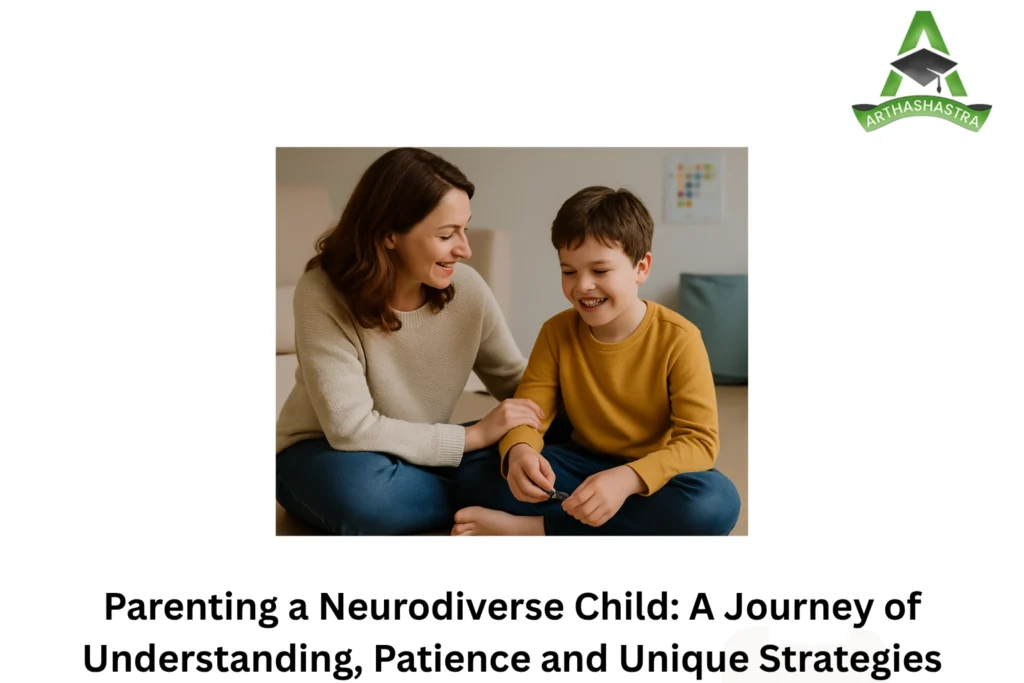Parenting is a profound journey for everyone, filled with immense joy, unexpected challenges and a continuous learning curve. When your child is neurodiverse—meaning their brain processes information differently, as seen in conditions like Autism Spectrum Disorder (ASD), ADHD, dyslexia or Tourette’s — this journey takes on unique dimensions. It requires a different toolkit, a deeper level of empathy and an unwavering commitment to understanding their individual world.
Parenting a neurodiverse child is about celebrating their unique strengths and perspectives while providing the specific supports they need to navigate a world often not designed for their neurology. It’s about shifting from a “fix-it” mindset to an “understand-and-support” approach.
Core Principles of Parenting a Neurodiverse Child:
- Embrace Neurodiversity: Recognize that your child’s differences are not deficits to be cured, but variations in brain wiring. This perspective fosters acceptance, reduces shame and allows you to tap into their unique talents and ways of thinking.
- Individualization is Key: If you’ve met one autistic child, you’ve met one autistic child. Every neurodiverse child is unique. What works for one may not work for another, even with the same diagnosis. Observe, listen and tailor your approach to your child’s specific needs, strengths and challenges.
- Patience and Empathy are Your Superpowers: Progress can be slow and challenges can be intense. Cultivate deep patience and constantly strive to see the world from your child’s perspective. Their behaviors often communicate unmet needs, sensory overload or confusion.
- Consistency and Predictability: Many neurodiverse children thrive on routine and predictability. Consistent boundaries, schedules and responses create a sense of safety and reduce anxiety, helping them feel secure in their environment.
- Clear, Concrete Communication: Avoid sarcasm, metaphors or vague instructions. Use direct, simple language. Visual supports (pictures, schedules, written words) are often more effective than verbal instructions alone.
- Focus on Functional Skills: Prioritize skills that enhance independence and quality of life, such as communication, self-regulation, daily living activities and practical social skills.
- Prioritize Parent Self-Care: You cannot pour from an empty cup. Taking care of your own mental and physical well-being isn’t selfish; it’s essential for your long-term capacity to support your child effectively.
Navigating Meltdowns: When Your Child Loses Control
One of the most challenging aspects of parenting a neurodiverse child is navigating meltdowns. It’s crucial to understand that a meltdown is not a tantrum.
- Tantrum: Often a deliberate act of protest or manipulation, with some level of control. The child can usually stop if they get what they want.
- Meltdown: An involuntary response to overwhelming stress, sensory overload or emotional dysregulation. The child has lost control of their behavior and often their body. They are in distress and cannot simply “stop.” Identifying Triggers (The “Why” Behind the Meltdown):
Before you can respond, try to understand why the meltdown is happening. Common triggers include:
- Sensory Overload: Too much noise, bright lights, crowds, strong smells, uncomfortable clothing.
- Communication Breakdown: Inability to express needs, wants, or feelings, or misunderstanding what’s being asked of them.
- Changes in Routine/Unexpected Events: Deviations from predictability can be highly distressing.
- Executive Function Demands: Difficulty with transitions, planning, initiating tasks, or too many instructions.
- Emotional Overwhelm: Intense frustration, anxiety, sadness, or excitement that they cannot process or express appropriately.
- Physical Discomfort: Hunger, fatigue, illness, pain.
The “Regulation First” Approach (During a Meltdown):
During a meltdown, your primary goal is to help your child regain regulation, not to reason, teach, or punish.
- Stay Calm: Your calm energy can be regulating. Take a deep breath. Speak in a low, even tone or don’t speak at all.
- Ensure Safety: First, ensure your child and anyone else nearby (including yourself) are safe. Move dangerous objects or move the child to a safer, contained space if necessary.
- Minimize Input: Reduce sensory stimulation. Dim lights, lower music, move to a quieter area or provide noise-cancelling headphones if tolerated. Avoid too many questions or demands.
- Provide Space or a Safe Spot: Some children need space; others need deep pressure or a firm hug (if they seek it). Offer a designated “calm-down” corner or a sensory-friendly space. Do not force physical contact if they are resistant.
- Validate, Don’t Reason: Acknowledge their distress without judgment. “I see you’re having a really hard time right now,” or “It looks like you’re very frustrated.” Avoid “Why are you doing this?” or logical explanations during the meltdown.
- Offer Support (Non-Verbal): A weighted blanket (if tolerated), a comforting presence (not necessarily touch), or just sitting quietly nearby can be helpful.
- Wait it Out: Meltdowns have a natural arc. They will peak and then subside. Your role is to support them through it.
After the Meltdown:
Once your child is calm and regulated:
- Reconnect and Reassure: Offer comfort and let them know you’re there for them.
- Process (Briefly and Later): Once fully regulated, you can briefly discuss what happened in simple, non-judgmental terms. Focus on problem-solving for next time. “It looked like the loud music made your body feel uncomfortable. Next time, we can try headphones or move to a quieter spot.”
No Punishment: Remember, it was an involuntary loss of control, not a choice. Punishing a meltdown can increase anxiety and shame.
Conclusion:
Parenting a neurodiverse child is not about perfection—it’s about presence, persistence, and deep, unconditional love. It’s a journey of learning to see the world through your child’s eyes and building bridges of understanding, trust, and support. By embracing their unique wiring, responding with empathy, and creating a safe, structured environment, you empower them to thrive in their own way.


